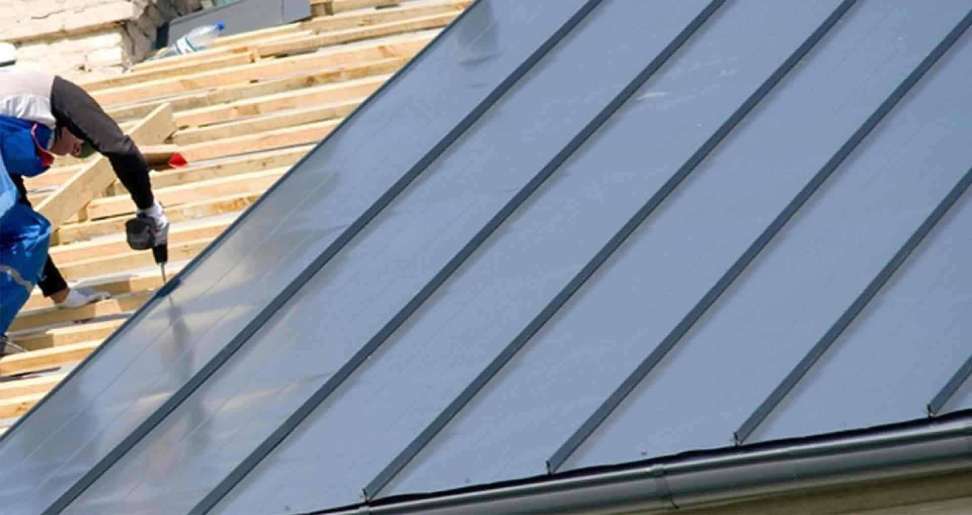A well-maintained roof is crucial for the safety and longevity of any building. It shields us from the elements, provides insulation, and adds to the aesthetic appeal of our homes. Whether you’re considering a new roof installation or need roof repair, understanding the basics and best practices is essential. This guide will walk you through the key aspects of roof installation and repair, ensuring your roof remains in top condition.
Understanding Roof Installation
Types of Roofing Materials
The first step in any roof installation is selecting the right roofing material. Common options include:
- Asphalt Shingles: Popular for their all kinds of affordability that pretty ease of installation, they come in various colors and styles.
- Metal Roofing: Known for their durability and other types of energy efficiency, metal roofs can last up to 50 years or more.
- Slate: A high-end option, slate is extremely durable and offers a unique, natural appearance.
- Tile: Often used in Mediterranean or Spanish-style homes, tile roofs are long-lasting and fire-resistant.
- Wood Shingles and Shakes: Provide a natural look but require more maintenance than other materials.
Roof Installation Process
Proper roof installation is crucial to ensure the roof’s longevity and effectiveness. Here are the key steps:
- Planning and Design: Begin with a thorough assessment of your roofing needs and design preferences. Consult with a professional to determine the best materials and design for your climate and home style.
- Removing Old Roofing: If replacing an existing roof, the old materials must be removed. This process involves stripping away shingles, underlayment, and any damaged sheathing.
- Inspection and Repairs: Before installing the new roof, inspect the decking for damage. Replace any rotted or weak areas to provide a solid foundation.
- Installing Underlayment: Lay down an underlayment to protect against moisture and provide an additional layer of insulation.
- Installing Roofing Materials: Begin at the bottom and work upwards, ensuring each layer overlaps properly. Follow the manufacturer’s instructions and local building codes for installation.
- Flashing and Ventilation: Install flashing around chimneys, vents, and other protrusions to prevent leaks. Ensure proper ventilation to extend the life of the roof and improve energy efficiency.
Roof Repair Essentials
Common Roof Problems
Roofs are exposed to harsh weather conditions, leading to wear and tear over time. Common issues that require roof repair include:
- Leaks: Water infiltration can cause significant damage to your home’s interior and structure. Look for stains on ceilings and walls as signs of a leak.
- Missing or Damaged Shingles: High winds, hail, and other weather events can cause shingles to crack, curl, or blow off.
- Flashing Damage: Damaged or improperly installed flashing can lead to leaks around chimneys, skylights, and vents.
- Sagging Roof: A sagging roof indicates structural issues that need immediate attention. This could be due to poor installation, water damage, or excess weight from snow and ice.
- Moss and Algae Growth: Moss and algae can retain moisture, leading to shingle deterioration and rot.
Roof Repair Techniques
Addressing roof issues promptly can prevent more extensive and costly damage. Here are common roof repair techniques:
- Shingle Replacement: For missing or damaged shingles, remove the old ones and replace them with new ones. Ensure they are properly aligned and nailed down.
- Fixing Leaks: Identify the source of the leak and repair it by replacing damaged shingles, sealing gaps with roofing cement, and installing new flashing if necessary.
- Flashing Repair: Remove the damaged flashing and install new pieces, ensuring they are properly sealed to prevent leaks.
- Patching Holes: Small holes or cracks can be patched with roofing cement or a specialized patch kit.
- Cleaning and Maintenance: Remove moss and algae with a mixture of water and bleach. Regularly clean gutters and downspouts to prevent water buildup and damage.
When to Call a Professional
While some roof repairs can be DIY projects, certain situations require professional expertise. Call a roofing contractor if:
- The damage is extensive or involves structural issues.
- You are unsure of the repair process or lack the necessary tools and safety equipment.
- The roof has a steep slope, making it dangerous to work on.
- You need an inspection to assess the overall condition of the roof.
Maintaining Your Roof
Regular maintenance can expand your roof life and prevent all types of costly repairs. Here are some tips for maintaining your roof:
- Regular Inspections: Conduct bi-annual inspections, especially after severe weather events, to identify and address potential issues.
- Clean Gutters: Keep gutters and downspouts clear of debris to prevent water damage and ice dams.
- Trim Trees: Trim overhanging branches to prevent damage from falling limbs and reduce moss and algae growth.
- Check Attic Ventilation: Ensure your attic has proper ventilation to prevent moisture buildup and reduce the risk of ice dams in winter.
- Address Small Issues Promptly: Fix minor issues, such as loose shingles or small leaks, before they escalate into more significant problems.
Conclusion
A well-installed and properly maintained roof is vital for protecting your home and ensuring its longevity. By understanding the basics of roof installation and repair, you can make informed decisions and keep your roof in optimal condition. Whether you’re installing a new roof or addressing minor repairs, attention to detail and regular maintenance are key to safeguarding your investment and ensuring a safe, comfortable home.
Have A Look :-
- Sorrento Mobile Home Park
- Current Challenges in Tidal and Wave Power
- 10 Dining Room Curtain Ideas to Elevate Your Space in 2024

